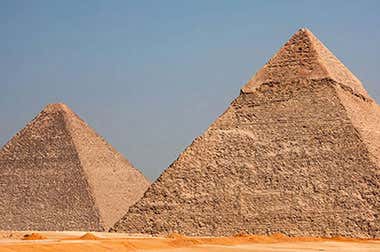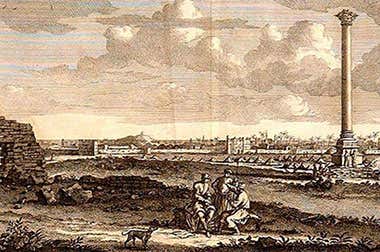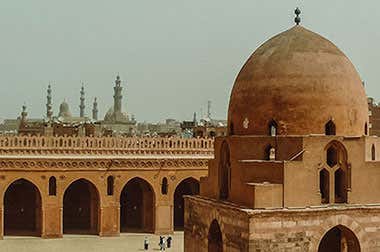
History of Egypt
One of the world's longest documented histories, Egypt's fascinating past dates back many millenia. Learn all about the ancient civilisation.
There are traces of human settlement in Egypt dating back to at least 40,000 BCE, with different cultures establishing themselves along the banks of the Nile. These prehistoric communities were divided into two regions: Upper and Lower Egypt.
The Two Lands
Upper and Lower Egypt took their names from the flow of the life-giving River Nile, from the East African highlands northwards to the Mediterranean Sea. Lower Egypt, in the north, was formed of twenty different districts called nomes, and had its capital city at Memphis. Known as Ta-Mehu or the Land of the Papryus, its symbols were the bee and the papyrus, and its Pharaoh wore an elongated red crown called a deshret. The patron of Lower Egypt was the cobra goddess Wadjet.
Upper Egypt, formed of twenty-two nomes, was represented by the symbols of the flowering lotus and the sedge, and its Pharaoh wore the tall white crown known as a hedjet. The capital was originally Thebes, where modern-day Luxor is now located, before the ancient city of Ptolemais Hermiou took over as administrative centre. Their patron deity was the vulture goddess Nekhbet.
The two halves of Egypt were united around 3100 BCE by the Pharaoh Menes, also known as Narmer, who became the founder of the first of thirty dynasties that would rule Ancient Egypt until its conquest by the Persians. The pschent was the double crown, combining the deshret and the hedjet, that Pharaohs wore to represent their power over the whole country.
The history of the Egyptian dynasties has been divided into three main time periods known as the Old Kingdom, the Middle Kingdom and the New Kingdom.


